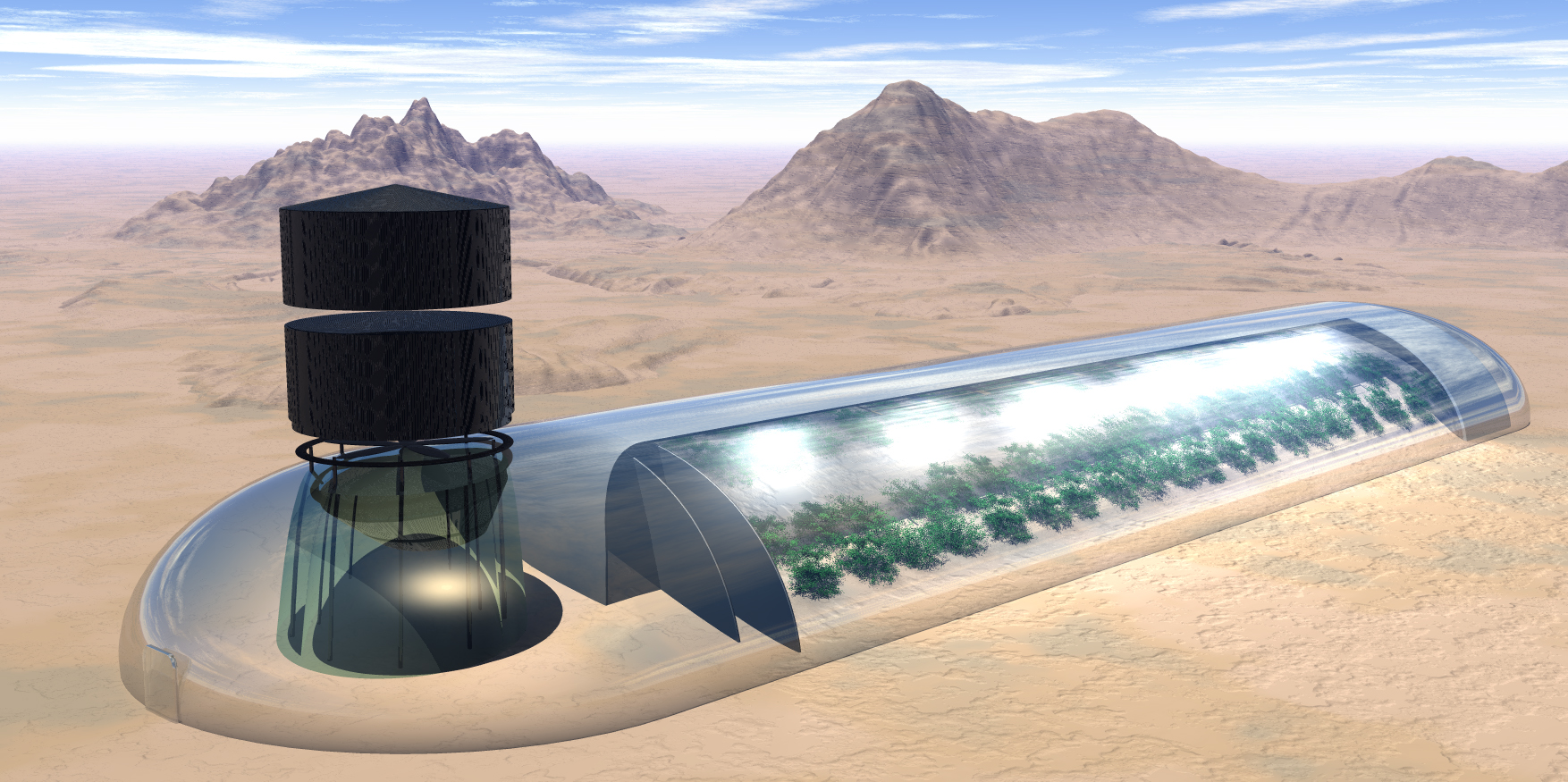SOLANA BEACH — Airstream Innovations is using their 3rd exhibition at the CannaGrow Expo in Reno to formally announce their new line of positive pressure greenhouses designed to meet the needs of Tier 1 and Tier 2 Cannabis growers. The new Mini-Series includes the Mini, MiniMax, and MiniMaximilian dual-skinned, wind-assisted, air-supported models. All three Minis offer the same benefits of Airstream’s larger quarter and half acre production systems. In addition to the automated ventilation and pest protection of their larger models, Airstream’s Mini-Series go much further by including a fully automated light deprivation/abatement sub-structure inside their patented inflated dome.
Literally a greenhouse within a greenhouse, a light-duty steel-hooped frame is erected within the superstructure that not only holds light fixtures but features a programmable automated roll out curtain. Curtain options include clear poly, black, or white or combinations thereof to maximize their intended use. This second (or even a third) skin provides growers the ability to pump heat between the two canopies to insulate their crop. Even without adding heat, field tests are showing temperature increases inside the substructure up to 30 degrees; saving costly heating bills. For the burgeoning cannabis market, this works as an automated blackout system (including light traps) required for many popular strains.
The Mini-Series greenhouses are all 22 feet wide with lengths up to 150 feet and feature a single wind-intake tower and industrial-scale variable speed fan at one end of the structure. The fan runs on municipal power and a backup generator is included in case of power failure. The internal pressure is automatically regulated up to 35,000 cubic feet per minute through a vent/access door at the opposite end. The door opens or closes based on an algorithm that maximizes plant transpiration by creating a 4 to 6 mile an hour airflow the entire length of the structure directly through the heart of the plant canopy. Once inflated, it takes only a 15 mile per hour wind to sustain structural integrity.
“I knew nothing could grow without airflow,” Chelf explains. “And I thought if I could work with natural forces, like the wind, maybe I could create a structure that held itself up with very little energy.”
Airflow is just as critical to photosynthesis as light, water, and minerals. If there’s not enough, the leaves get too wet and disease and fungus can take hold. When they are too dry, photosynthesis slows or stops altogether. The right amount of moving air makes crops grow more efficiently, he says, adding that his organic strawberry plants use one-third the water and produce five times the berries compared to those grown in fields.
Another important feature Chelf includes in every Airstream greenhouse is his USDA certified pest protection solution. As air enters the structure through the “wind-catcher” towers, it is pushed through the finest thrip-proof netting available. Insects as small as .5 microns are captured before ever reaching the plants. In just the last four years, this has benefited a half dozen citrus nurseries who have installed over a million square feet combined of Airstream’s greenhouses growing trees that can be sold anywhere on earth, not just within the quarantine areas — indefinitely sustaining their business model.
The fact that Airstream’s existing clients use little if any fungicides or pesticides on their crops is a boon for cannabis growers who are under increased scrutiny for using suspect chemicals. In fact, well-established Arizona and Washington State medical cannabis Tier 3 licensees are already adopting Airstream’s technology with over 80 thousand square feet in various stages of implementation. The Mini-Series busts the market wide open for Tier 1 and Tier 2 growers just now entering the market. With the “race to the bottom” for wholesale cannabis prices, Airstream clients benefit greatly from the lower installation, maintenance and production costs compared to conventional alternatives.
Many are realizing the current conventional methodology will become unsustainable when prices drop to $500 per pound. And for many growers, they are unprofitable at $1000 per pound. If growers don’t go broke first they will be forced to sell, move outdoors (with all the risks and pressures) or invest in greenhouses. Those familiar with conventional greenhouses know how expensive they are and how ineffective they can be in dealing with airflow and fungal/pest protection. Airstream not only mitigates these disease and pest pressures, but dramatically reduces the entry cost. Even better, Airstream’s greenhouses are considered temporary structures which in some cases land owners can avoid property taxes.
For clients growing in intemperate climates, Airstream offers automated heating and cooling/fogging solutions. The need for these add-ons vary depending upon region. For example, desert operations may require fogging at certain times of the year, particularly for young starts. Whereas mountain locations may require heating when temperatures drop precipitously low. While Airstream’s greenhouses use natural light, many growers require supplemental lighting. Airstream meets this need with optional custom-designed solutions for each model.
With the addition of the Mini-Series, Airstream has expanded their customer base meeting the needs of nurserymen and boutique growers seeking affordable growing solutions. By offering smaller solutions based on their successful large-scale greenhouses, Airstream has dialed into the boutique organic and startup cannabis market by offering full turnkey solutions, including heating, cooling and lighting for as low as $75,000 USD installed. For more details contact Airstream Innovations or visit them at www.airstreaminnovations.com or www.makehempgreatagain.com.


